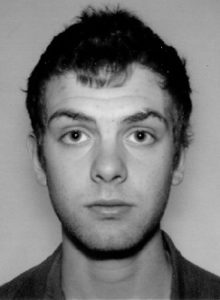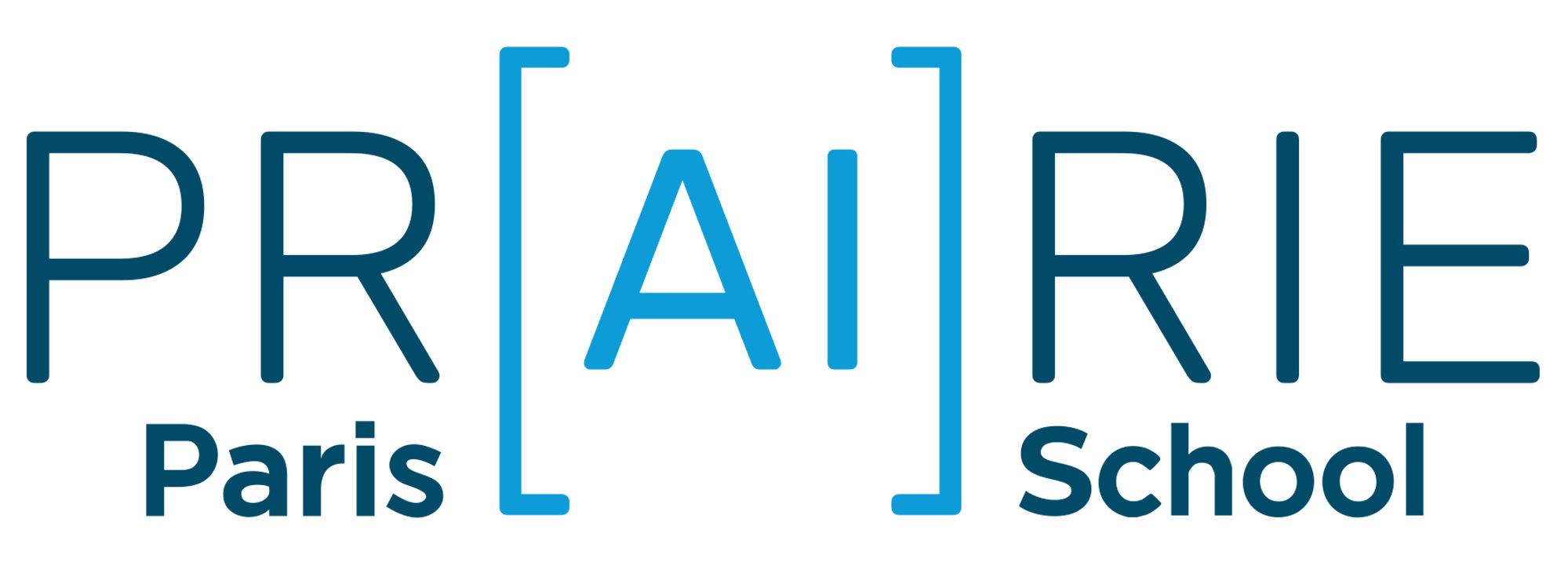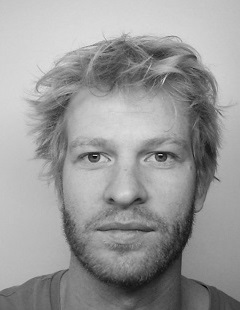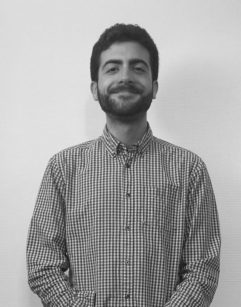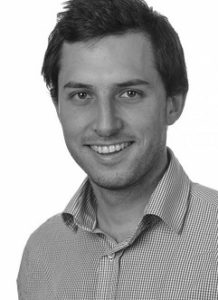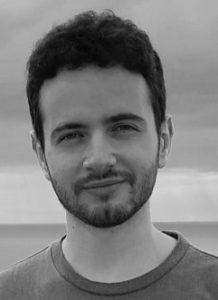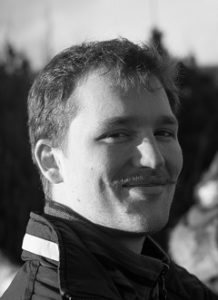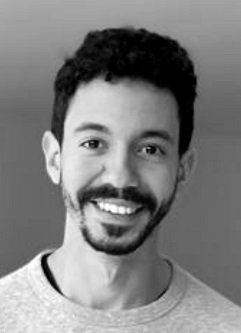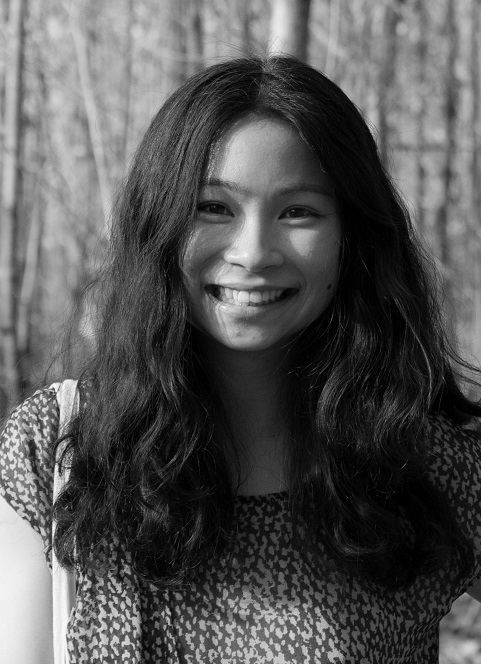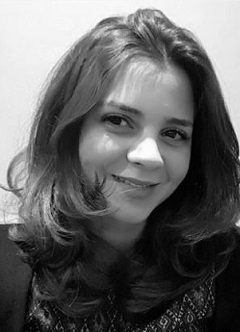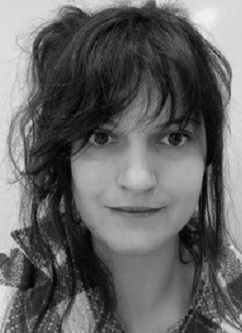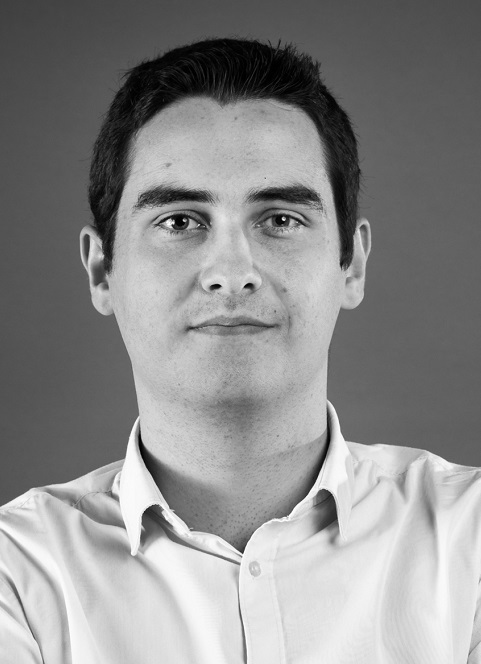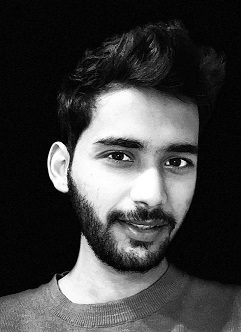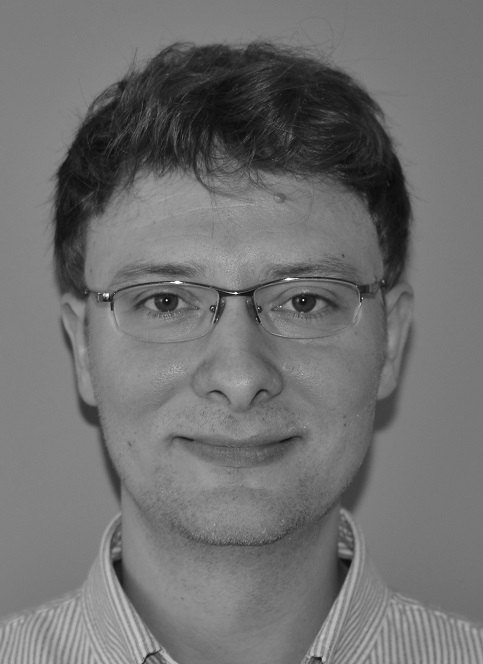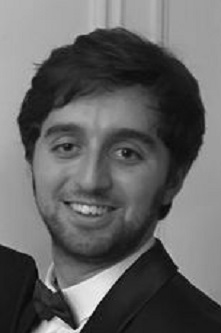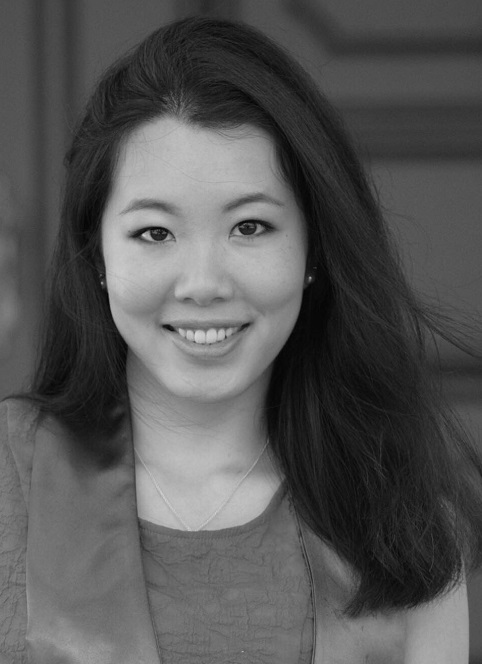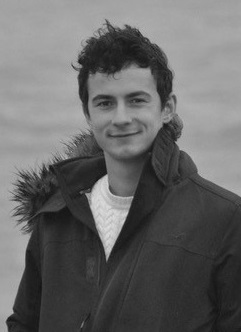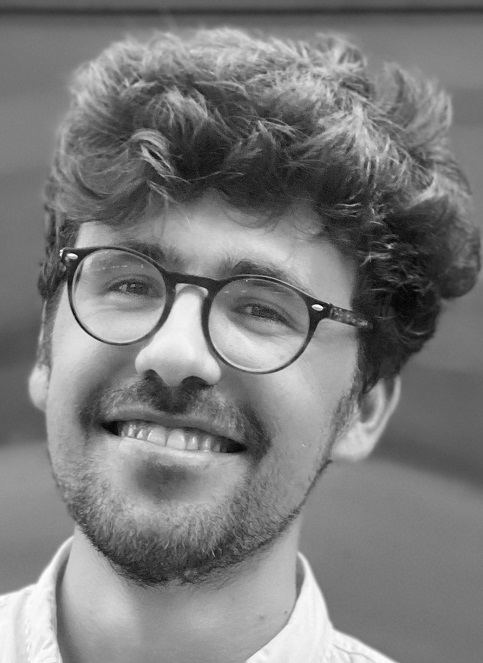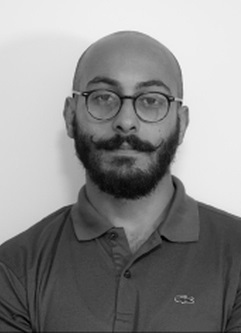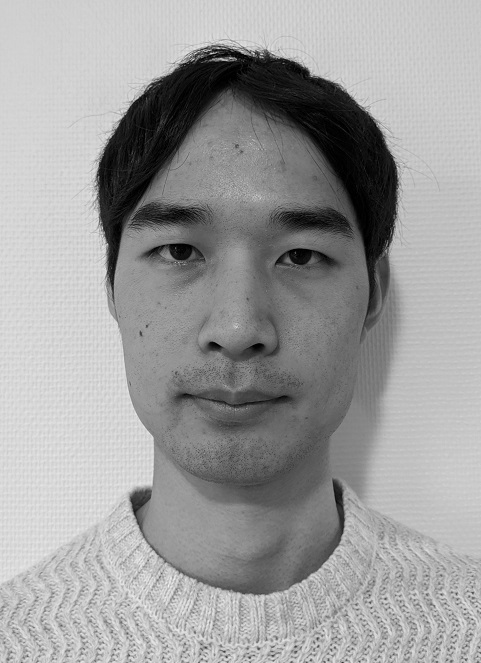VESTERGAARD Christian
Computational Neuroscience
christian.vestergaard [at] pasteur.fr
Short bio
Christian Vestergaard is a CNRS researcher in the Decision and Bayesian Computation lab at the Pasteur Institute. He holds a PhD in theoretical physics and biophysics from the Technical University of Denmark (2012).
Topics of interest
Network modeling, neuroscience, graph learning, statistical physics.
Project in Prairie
Christian Vestergaard’s research focuses on linking the complex topology of the neural network that make up an animal’s brain to how it computes and generates behavior. He develops statistical and computational methods drawing inspiration from graph theory, statistical physics, information theory, and machine learning. This project aims at providing new approaches to artificial neural network design and optimization.
Quote
Universal coding theorems show that a multitude of different neural architectures can be used to represent any function. Thus, the intricate architecture of biological neural networks probably determine not what they can learn, but rather how they encode information in order to provide good inductive biases that enable robust and efficient learning. Focusing on small animals, such as Drosophila larva, whose neural wiring has been mapped at full resolution and whose neurons can be individually controlled in freely behaving animals, will allow us to link the structures of link neural microcircuits to their functions. This will help uncover how biological neural networks differ from artificial neural networks and may provide inspiration for more efficient deep learning architectures.
Team
BARBIER-CHEBBAH Alex
Postdoctoral researcher
CARPENTIER Justin
Inria / L’Ecole normale supérieure - PSL
justin.carpentier [at] inria.fr
Short bio
Justin Carpentier is a Researcher at Inria Paris within the WILLOW team. His research lies at the interface of Learning, Perception and Control for Robotics. From 2018 to 2019, he was a postdoctoral research associate in the same WILLOW team. He obtained a PhD degree from the University of Toulouse in Robotics in 2017.
Topics of interest
Robotics, Control, Vision, Optimization and Machine Learning.
Project in Prairie
The main scientific objective of Justin’s project within PRAIRIE is to lay the mathematical and algorithmic foundations to enable robotic systems (i) to learn precise model of their dynamics and their interactions and (ii) to exploit these learned models inside advanced control schemes in order to precisely achieve dynamic motions and solving complex tasks, all with an advanced level of autonomy and agility.
Quote
Despite major progress in mechatronics, planning, automatic control and perception over the past decades, current robots remain in overall limited in their capacity to comprehend and control the heterogeneous set of interactions with their environment. The overall ambition of Justin’s research is to enhance the robot capacities to precisely and safely interact with their surroundings in order to achieve fine manipulation gestures and agile locomotion, by leveraging recent progresses made in Vision, Machine Learning, Optimization and Control.
Team
ROYER Clément
clement.royer [at] dauphine.psl.eu
Short bio
Clément Royer is an associate professor of computer science at Université Paris Dauphine-PSL and a researcher in the MILES team at LAMSADE. From 2016 to 2019, he was a postdoctoral research associate at the Wisconsin Institute of Discovery, University of Wisconsin-Madison, USA. He received his Ph.D. in applied mathematics from the University of Toulouse, France, in 2016. Clément is a recipient of the COAP Best Paper Prize for 2019.
Topics of interest
Numerical optimization, Optimization for machine learning, Randomized algorithms.
Project in Prairie
As the amount of data available and the complexity of the models keep increasing, a number of issues arise in deploying optimization techniques for artificial intelligence at scale. Such challenges have long been integrated in high-performance computing, where the combination of optimization with other fields from numerical linear algebra to differential equations has led to powerful algorithms. This project aims at adopting a similar approach with optimization methods for data science.
Quote
My research aims at developing optimization methods for artificial intelligence that leverage existing methodology and advances from scientific computing along two axes. On one hand, we motivate the use of standard algorithmic frameworks for scientific computing in modern learning tasks by proposing practical schemes with complexity guarantees. Our research will aim at analyzing the complexity of classical second-order methods used in scientific computing so as to design frameworks with theoretical grounds and practical appeal for artificial intelligence. On the other hand, we develop derivative-free algorithms for automated parameter tuning of complex data science models. Our setting will be that of expensive, black-box systems for which a number of parameters require calibration.
Team
GOYENS Florentin
Postdoctoral researcher
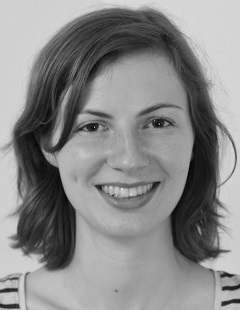
OLYMPUS DIGITAL CAMERA
BAWDEN Rachel
rachel.bawden [at] inria.fr
Short bio
Researcher (Chargée de recherches) at Inria in the ALMAnaCH project-team since 2020. Previously obtained a PhD from Université Paris-Sud (awarded the ATALA thesis prize) and spent 2 years as a postdoc in the Machine Translation group at the University of Edinburgh.
Topics of interest
Natural language processing, multilinguality, machine translation
Project in Prairie
Rachel Bawden will focus on improving Machine Translation in the face of language variation (texts from different domains, user-generated texts and historical language). Alongside the development of models, she will also explore the interpretability of models in a bid to make them more robust to variation. Finally, she will experiment with the integration of other input modalities (e.g. image and video data), to help tackle ambiguity and scenarios for which the input signal is impoverished or incomplete.
Quote
Huge progress has been seen in Machine Translation in recent years. However, the translation of domain-specific texts (e.g. biomedical and financial), those displaying a high degree of language variation (e.g. social media texts containing spelling errors, acronyms and marks of expressiveness) and other non-standard varieties of language (including dialects and old languages) remains a challenge. Developing models that (i) are robust to variation, (ii) are able to handle the low-resource settings that these scenarios often present and (iii) can incorporate all external context is therefore fundamental to progress in Machine Translation.
Team
NISHIMWE Lydia
PhD student
Matthieu FUTERAL-PETER
PhD student
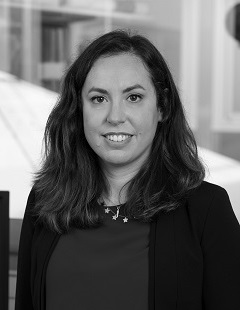
Laura CANTINI
CNRS Research Scientist (Chargé de Recherches) at IBENS, specialized in multi-omics data integration in bulk and single-cell data
CANTINI Laura
laura.cantini [at] pasteur.fr
Short bio
Young PI (G5) in Institut Pasteur and CNRS permanent researcher. Her research activity is focused on the design of machine learning methods for the integration of single-cell multi-modal data. Mathematician by training, Laura received her PhD in cancer systems biology from the University of Turin (Italy). She then pursued a postdoc in the cancer system biology group at Institut Curie (Paris). In 2018, awarded the L’Oréal-UNESCO for Women in Science and EMBO fellowship, she joined CSAIL at MIT (USA), before being selected as CNRS permanent researcher. She is recipient of the ERC StG 2023, ANR JCJC 2020, Sanofi iTech Awards 2020 and L’Oréal-UNESCO for Women in Science fellow (2018 edition).
Topics of interest
Single-cell omics data, multi-modal integration, network inference
Project in Prairie
Laura Cantini will develop computational methods for multi-modal single-cell data integration. She will in particular combine multi-omics joint dimensionality reduction, to identify the cell types and states present in a biological sample, and network-based methods to reconstruct the multi-omics regulatory mechanisms underlying each cell type/state. Finally, by applying the developed approaches to patient-derived data, she will contribute to improve our understanding of cancer heterogeneity and its underlying molecular mechanisms.
Quote
The timely detection and successful treatment of cancer depends on our ability to understand when, why, and how a subpopulation of cells deviates away from a healthy state or acquires drug resistance. Single-cell multi-modal data, produced at increasing peace, offer the opportunity to tackle these questions. The current major bottleneck is the crucial need for computational methods able to translate this wealth of information into actionable biological knowledge.
Team
SAMARAN Jules
PhD student
LASRI Karim
L’Ecole normale supérieure - PSL
Short bio
Engineer’s degree at Ecole CentraleSupélec (former Ecole Centrale Paris)
Master’s degree in Cognitive Science at the Ecole Normale Supérieure
Thesis title
Linguistic generalization in transformer-based neural language models.
Short abstract
Transformer-based neural architectures bear lots of promises as they seem to address a wide range of linguistic tasks after learning a language model. However, the level of abstraction they reach after their training is still opaque. My main research focus is understanding better how neural language models generalize. What linguistic properties do these architectures acquire during learning ? How is linguistic information encoded in their intermediate representation spaces?
DO Virginie
virginie.do [at] dauphine.eu
Short bio
MSc in Applied Mathematics / Diplôme d’Ingénieur – Ecole Polytechnique
MSc in Social Data Science – University of Oxford
Thesis title
Fairness in machine learning: insights from social choice.
Short abstract
Designing fair algorithms has recently appeared as a major issue in machine learning, and more generally in AI, while it has been studied for long in economics, especially in social choice theory. My goal is to bring together the notions of fairness of the two communities, and leverage the concepts and mathematical tools of social choice to address the new challenges of fairness in machine learning.
AYADI Manel
manel.ayadi [at] dauphine.eu
Short bio
PhD in Computer Science at LAMSADE – Paris-Dauphine
Research project
How does changing the voting system and the electoral district boundaries impact the outcome of the French legislative elections?
Short abstract
The aim of the project is to study the impact of changing the voting system (mixed electoral system, proportional representation …) and the electoral district boundaries on the outcome of the French legislative elections of 2017.
BARRÉ Chloé
chloe.barre [at] pasteur.fr
Short bio
PhD, LPTMC (Laboratoire de Physique Théorique de la Matière Condensée), Sorbonne University, Paris
Research project
Bayesian induction of the behavior of the larva.
Short abstract
Making
decisions is a fundamental feature of animal behavior. Nevertheless, there
remains a large knowledge gap in linking neural architecture and behavioral
response. To bridge this gap, targeting individual neurons and having a simple
read-out of their activity is crucial, and Drosophila larvae are ideal
organisms for such an approach. My work is part of a larger project to explore
the relationship between neural network dynamics and decision making in
Drosophila larvae. I use Bayesian induction techniques and physical modeling to
understand this relationship.
By
combining video measurement experiments of larval behavior with advances in
modern optogenetics that allow the activation/inactivation of individual
neurons, a database of millions of larvae responding to the activation of
single neurons has been constructed. Although a machine learning approach that
projects larval videos into complex behavioral dictionaries has been developed,
some images remain ambiguous and the corresponding behavior is therefore poorly
detected. To improve behavior detection we describe the shape of the larva
using insights from solids mechanics. Using this physical model, we perform a
Bayesian induction to find parameters that describe the behavior of the larvae
in a more robust way.
Once the behaviors are properly detected and quantified, we want to detect all possible responses and modulations induced by the activation or inactivation of a neuron. We have written a simplified model that describes the dynamics and sequences of behaviors. With Bayesian inference I learn the parameters of my model and with a generative model and theses parameters I can recreate virtual larvae. These virtual larvae made it possible to separate neural responses between those provoking simple and immediate actions from those generating complex behaviors. It is thus possible to group neurons in terms of response.
By combining the techniques of biologists with probabilistic analysis techniques (including Bayesian inference), we can identify behavioral changes due to the activation/inactivation of neurons and thus will allow us to infer causal relationships between neural activity and behavioral patterns, and uncover how behavior emerges from activity in the connectome.
ANDRAL Charly
andral [at] ceremade.dauphine.fr
Short bio
Diplome d’ingénieur – ENSAE Paris
Master Statistics And Machine Learning, Paris Saclay University
Thesis title
Improvement of MCMC methods and adaptation to the Big Data.
Short abstract
MCMC methods can have some difficulties exploring space, especially in high dimensional settings that can occur in a context of Big Data. The goal of my PhD thesis is to find enhancements to MCMC about this exploring issue.
GODARD Charlotte
charlotte.godard [at] pasteur.fr
Short bio
- Engineer degree – Telecm Physique Strasbourg
- Master degree in Imaging, Robotics and Engineering for Healthcare – University of Strasbourg
Thesis title
Semi-automatic and amortized developments of transfer function for surgery planning in virtual reality.
Short abstract
Interpretation of medical images, such as MRI or CT-scan, can be challenging for a non-radiologist expert because of the various image quality and of the similarities between different structures of interest. However, surgeons need to understand these images to prepare surgeries and define corresponding anatomical landmarks. As universal segmentation is not possible due to the diversity of images between patients, we focused on the optimization of the visualization process applied only on the raw data. The AVATAR MEDICAL platform uses virtual reality for an intuitive visualization and manipulation of the images. Visualization parameters (color, transparency) are currently defined manually using an user-friendly transfer function desktop interface. The objective of the thesis is to automate the transfer function generation for a faster isolation of the structures of interest in the image, by combining a statistical approach and pre-trained models.
MISHRA Shrey
L’Ecole normale supérieure - PSL
Short bio
- Manipal University (India, BTech)
- Cesi school of Engineering (Software majors, Ecole de engineer)
- Munster Technological University (MSc Artificial Intelligence)
Thesis title
Extracting information related to the Scientific Articles published and making a knowledge base out of it, with the application of various AI / Machine learning based techniques.
Short abstract
Every years thousand’s of scientific papers are published in the academia covering various scientific proofs theorems and relations in a form of a Pdf document. I am enrolled in a TheoremKb (A project led by Pierre Senellart) to extract information from the scientific articles while training Machine learning models to identify / relate various documents together based upon the information expressed in the article (including the mathematical proof’s).
KMETZSCH Virgilio
virgilio.kmetzsch [at] inria.fr
Short bio
MSc in Data Science – Grenoble INP Ensimag & UGA
Thesis title
Multimodal analysis of neuroimaging and transcriptomic data in genetic frontotemporal dementia.
Short abstract
Frontotemporal dementia (FTD) is a devastating neurodegenerative disease with no effective treatments so far. The Paris Brain Institute has assembled one of the largest cohorts worldwide on genetic forms of FTD, comprising multimodal data including neuroimaging (MRI, PET), cognition and transcriptomic (RNA-seq). The present PhD project aims at designing and applying new approaches for integrating multimodal transcriptomic and neuroimaging data, to characterize biomarkers of the presymptomatic phase of the disease, in order to design upcoming therapeutic trials.
TEBOUL Raphaël
raphael.teboul [at] inserm.fr
Short bio
Master degree in Engineering at Telecom Paris
Thesis title
Unravelling non-coding driver alterations in cancer with deep learning.
Short abstract
Of the 3 gigabases that constitute the human genome, only about 50 megabases (<2%) encode protein-coding genes. Particular attention has been paid to somatic mutations affecting the coding sequence of these genes, leading to the almost exhaustive characterization of 723 genes implicated in cancer (cancer gene census, COSMIC database, September 2019). By contrast, at the notable exception of TERT promoter mutations that induce the expression of telomerase (a key enzyme necessary for unlimited cell proliferation), very few driver alterations have been identified in the non-coding genome. Analysis of mutation hotspots or known regulatory regions like promoters and enhancers have failed to identify significantly recurrent mutations with a strong transcrptional impact on cancer genes. The main reason for that is the difficulty to predict the functional consequence of non-coding mutations. Although these mutations can alter important regulatory regions and modulate the expression of key cancer genes, there is no established method to predict the transcriptional impact of a non-coding mutation. To fill this gap, we will develop a deep neural network able to predict gene expression based on the local sequence context. Pioneer studies have demonstrated the ability of deep neural networks to learn how to recognize several regulatory motifs from the DNA sequence, including splicing sites, chromatin accessibility and 3D conformation or transcription factor binding sites. More recently, Olga Troyanskaya’s team has developed a deep neural network integrating able to predict, from the DNA sequence, the expression level of genes in a cell-type specific manner, by integrating predictions of chromatin state and transcription factor binding. Once trained, these neural networks are able to predict in silico the regulatory impact of any sequence variant, and are thus extremely valuable assets to identify disease coding variants. Deep learning analysis has been used to identify causal variants in several diseases including autism, but have not yet been applied to cancer. Our hypothesis is that leveraging the power of deep neural network to explore the millions of somatic alterations identified in cancer sequencing projects is a promising approach to uncover the missing driver events involving the non-coding human genome.
ZHOU Anqi
anqi.zhou [at] pasteur.fr
Short bio
- BSc. Applied Mathematics, BA. Neuroscience
- MSc. Biotechnology, Brown University, USA
Thesis title
Rapidly identifying therapeutics of Alzheimer’s Disease using millions of Drosophila larvae and amortized inference.
Short abstract
Alzheimer’s Disease (AD) affects millions of people worldwide, yet the limited treatments address only the physiological symptoms instead of the cause of pathogenesis. The goal of this PhD project is to establish a new pipeline for measuring AD phenotypes that leverages the advantages of Drosophila as a model system for circuit studies and links probabilistic behavior to disease progression. The pipeline builds on automated machine learning to rapidly analyze data from millions of larvae.
SAUTY DE CHALON Benoit
benoit.sauty-de-chalon [at] inria.fr
Short bio
Diplôme ingénieur Ecole Polytechnique
Thesis title
Multimodal modelling of neurodegenerative diseases.
Short abstract
The goal is to find quantitative links between the decay of structural properties of the brain, shown through imaging techniques such as MRI/Pet scans/etc and the decay of cognitive abilities of the patients, shown through cognitive assessment tests. The research focuses on Alzheimer and Parkinson patients.
D’ASCOLI Stéphane
L’Ecole normale supérieure - PSL / FAIR Paris
stephane.dascoli [at] gmail.com
Short bio
Master in Theoretical Physics, ENS Paris
Thesis title
Deep learning: from toy models to modern architectures.
Short abstract
My research focuses on understanding how deep neural networks are able to generalize despite being heavily overparametrized. On one hand, I use tools from statistical mechanics to study simple models, and try to understand when and why they overfit. On the other hand, I investigate how different types of inductive biases affect learning, from fully-connected networks to convolutional networks to transformers.
HAIRAULT Adrien
hairault [at] ceremade.dauphine.fr
Short bio
- MSc in Statistical Science, Oxford University
- Double licence M.I.A.S.H.S, Université Paris 1 Panthéon-Sorbonne & SciencesPo Paris
Thesis title
Foundations and applications in Bayesian Mixture Modelling.
Short abstract
Mixtures are a popular class of models bridging parametric and non-parametric statistics and, as part of the standard data analysis toolkit, have ubiquitous applications in regression, clustering, machine learning, etc. One of the main goals of this thesis is to ease model selection within such a class of models, in particular by finding efficient ways of computing the marginal likelihood (aka evidence) of semi-parametric models (such as Dirichlet Process Mixtures). We also study the convergence properties of the Bayes Factor when comparing such parametric and semi-parametric models.
ALLOUCHE Tahar
Université Paris-Dauphine and CNRS
tahar.allouche [at] dauphine.eu
Short bio
Mathematical Engineering degree from ENSTA Paris – M2 Optimization from Paris-Saclay university
Thesis title
Learning societal preferences for automated collective decision making.
Short abstract
We study sophisticated models of agents’ preferences as data structure in a learning framework for collective decision aiding. Statistical, computational and epistemic aspects of the preferences are considered in order to thoroughly explore their structure and efficiently infer optimal decisions.
YAMANE Ikko
ikko.yamane [at] dauphine.psl.eu
Short bio
Ph.D. from The University of Tokyo
Research topic
Counter factual inference with weakly supervised learning
Short abstract
In counter factual inference, one tries to predict what would happen if attributes of data were some values different from that actually observed. Existing counter factual inference methods often require expensive, controlled experiments to be conducted to collect necessary data. My research interest focuses on developing methods that only need cheaper and efficient experiments possibly with missing observations or milder conditions.
